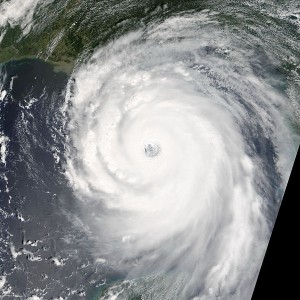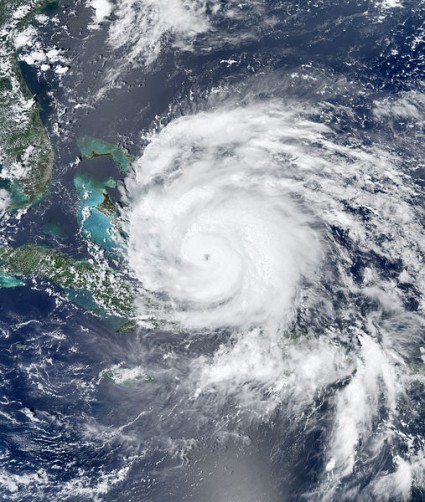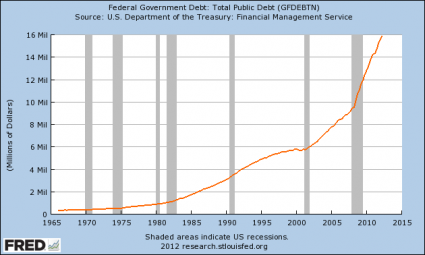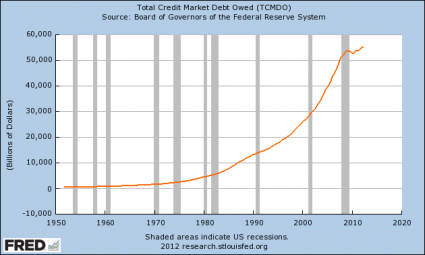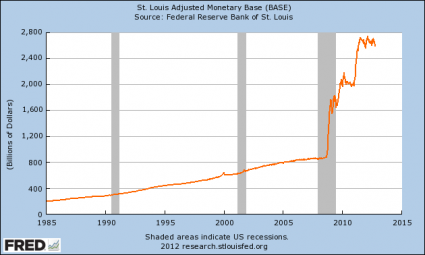 Do you believe that economic trouble is coming in 2013? If so, you have a lot of company. According to a brand new Gallup poll that was just released, 65 percent of Americans believe that 2013 will be a year of “economic difficulty” while only 33 percent of Americans believe that 2013 will be a year of “economic prosperity”. Gallup has been asking this question for a lot of years, and the percentage of Americans that are anticipating economic difficulty in the year ahead has not been this high since the early 1980s. And without a doubt, there are a whole lot of reasons to be deeply concerned about the economy as we head into the new year. But it isn’t just 2013 that Americans are pessimistic about. According to the new Gallup poll, 50 percent of all Americans believe that the best days of America are behind us, and only 47 percent of all Americans believe that the best days of America are ahead of us. Those are very sobering numbers. Half the country believes that it is only downhill from here for the United States. Unfortunately, they are exactly right. Things are rapidly going to get worse for our economy and for our nation as a whole. We are going to start reaping the consequences of decades of very foolish decisions, and the pain is going to be immense.
Do you believe that economic trouble is coming in 2013? If so, you have a lot of company. According to a brand new Gallup poll that was just released, 65 percent of Americans believe that 2013 will be a year of “economic difficulty” while only 33 percent of Americans believe that 2013 will be a year of “economic prosperity”. Gallup has been asking this question for a lot of years, and the percentage of Americans that are anticipating economic difficulty in the year ahead has not been this high since the early 1980s. And without a doubt, there are a whole lot of reasons to be deeply concerned about the economy as we head into the new year. But it isn’t just 2013 that Americans are pessimistic about. According to the new Gallup poll, 50 percent of all Americans believe that the best days of America are behind us, and only 47 percent of all Americans believe that the best days of America are ahead of us. Those are very sobering numbers. Half the country believes that it is only downhill from here for the United States. Unfortunately, they are exactly right. Things are rapidly going to get worse for our economy and for our nation as a whole. We are going to start reaping the consequences of decades of very foolish decisions, and the pain is going to be immense.
Gallup asked some other very interesting questions as well. The following are some of the other results from the poll…
-68 percent of Americans believe that 2013 will be a year of rising crime rates.
-57 percent of Americans believe that 2013 will be a year in which American power will decline in the world.
-82 percent of Americans believe that 2013 will be a year in which taxes in the United States will rise.
So why are so many people so pessimistic as we enter 2013?
That is a good question. I think that a lot of people are starting to wake up and are realizing the gigantic problems that are staring the U.S. right in the face.
Even our friends over in Europe can see what is happening to us. We are like a former athletic champion that is now clearly on the wrong side of “middle age” and is exhibiting obvious signs of decline. We still like to think of ourselves as “the champ”, but the truth is that we are fat, lazy, broken down and bankrupt. The following is a brief excerpt from an article that appeared in a major UK news source the other day…
The rest of the world — dangerously reliant on a buoyant U.S. — should note one thing above all: the fundamentals of America’s economy are, frankly, terrible, and its international dominance is not nearly as assured as it once was.
Its economic culture has started to change since President Obama entered the White House four years ago this month.
America more closely resembles Europe in living beyond its means and in the President’s determination to build a massive welfare state.
The mainstream media and most of our politicians endlessly proclaim that things are about to turn around and that a “recovery” is on the way, but that is not even close to the truth.
Fortunately, a few of our politicians realize what is really happening and are willing to talk about it. Unfortunately, not enough people are listening to them.
For example, Ron Paul has a really good grasp on how destructive the U.S. national debt is and how we are literally destroying the bright future that our children and our grandchildren should have had. The following is what he posted on his Facebook page the other day about the “fiscal cliff deal” that just got pushed through Congress…
We Are Already Over the Fiscal Cliff
2 January 2013
Despite claims that the Administration and Congress saved America from the fiscal cliff with an early morning vote today, the fact is that government spending has already pushed Americans over the cliff. Only serious reductions in federal spending will stop the cliff dive from ending in a crash landing, yet the events of this past month show that most elected officials remain committed to expanding the welfare-warfare state.
While there was much hand-wringing over the “draconian” cuts that would be imposed by sequestration, in fact sequestration does not cut spending at all. Under the sequestration plan, government spending will increase by 1.6 trillion over the next eight years. Congress calls this a cut because without sequestration spending will increase by 1.7 trillion over the same time frame. Either way it is an increase in spending.
Yet even these minuscule cuts in the “projected rate of spending” were too much for Washington politicians to bear. The last minute “deal” was the worst of both worlds: higher taxes on nearly all Americans now and a promise to revisit these modest reductions in spending growth two months down the road. We were here before, when in 2011 Republicans demanded these automatic modest decreases in government growth down the road in exchange for a massive increase in the debt ceiling. As the time drew closer, both parties clamored to avoid even these modest moves.
Make no mistake: the spending addiction is a bipartisan problem. It is generally believed that one party refuses to accept any reductions in military spending while the other party refuses to accept any serious reductions in domestic welfare programs. In fact, both parties support increases in both military and domestic welfare spending. The two parties may disagree on some details of what kind of military or domestic welfare spending they favor, but they do agree that they both need to increase. This is what is called “bipartisanship” in Washington.
While the media played up the drama of the down-to-the-wire negotiations, there was never any real chance that a deal would not be worked out. It was just drama. That is how Washington operates. As it happened, a small handful of Congressional and Administration leaders gathered in the dark of the night behind closed doors to hammer out a deal that would be shoved down the throats of Members whose constituents had been told repeatedly that the world would end if this miniscule decrease in the rate of government spending was allowed to go through.
While many on both sides express satisfaction that this deal only increases taxes on the “rich,” most Americans will see more of their paycheck going to Washington because of the deal. The Tax Policy Center has estimated that 77 percent of Americans would see higher taxes because of the elimination of the payroll tax cut.
The arguments against the automatic “cuts” in military spending were particularly dishonest. Hawks on both sides warned of doom and gloom if, as the plan called for, the defense budget would have returned to 2007 levels of spending! Does anybody really believe that our defense spending was woefully inadequate just five years ago? And since 2007 we have been told that the wars in Iraq and Afghanistan are winding down. According to the Congressional Budget Office, over the next eight years military spending would increase 20 percent without the sequester and would increase 18 percent with the sequester. And this is what is called a dangerous reduction in defense spending?
Ironically, some of the members who are most vocal against tax increases and in favor of cuts to domestic spending are the biggest opponents of cutting a penny from the Pentagon budget. Over and over we were told of the hundreds of thousands of jobs that would be lost should military spending be returned to 2007 levels. Is it really healthy to think of our defense budget as a jobs program? Many of these allegedly free-market members sound more Keynesian than Paul Krugman when they praise the economic “stimulus” created by militarism.
As Chris Preble of the Cato Institute wrote recently, “It’s easy to focus exclusively on the companies and individuals hurt by the cuts and forget that the taxed wealth that funded them is being employed elsewhere.”
While Congress ultimately bears responsibility for deficit spending, we must never forget that the Federal Reserve is the chief enabler of deficit spending. Without a central bank eager to monetize the debt, Congress would be unable to fund the welfare-warfare state without imposing unacceptable levels of taxation on the American people. Of course, the Federal Reserve’s policies do impose an “inflation” tax on the American people; however, since this tax is hidden Congress does not fear the same public backlash it would experience if it directly raised income taxes.
I have little hope that a majority of Congress and the President will change their ways and support real spending reductions unless forced to by an economic crisis or by a change in people’s attitudes toward government. Fortunately, increasing numbers of Americans are awakening to the dangers posed by the growth of the welfare-warfare state. Hopefully this movement will continue to grow and force the politicians to reverse course before government spending, taxing, and inflation destroys our economy entirely.
It was good that Ron Paul placed blame on both political parties and on the Federal Reserve for our debt problems.
The Federal Reserve is not often talked about much when it comes to assigning blame for the debt, but it truly is one of the primary reasons why our debt is so enormous today. The Federal Reserve system was designed to be a perpetual government debt machine, and it has accomplished that task very well.
When the Federal Reserve was first created, the total U.S. national debt was less than 3 billion dollars.
That is about as much as we add to the U.S. national debt every single day at this point.
And since Ben Bernanke took the reigns at the Fed, our debt problems have greatly accelerated.
The U.S. national debt has more than doubled from a little over $8 trillion to more than $16.4 trillion since Ben Bernanke became chairman of the Federal Reserve in 2006.
But disaster has not struck yet, so most Americans think that everything must be okay.
Well, if you want to ignore all of the evidence of our impending economic demise, go ahead and do that. Go on lots of expensive vacations, run up your credit cards, buy a new boat and party like its 1999. Enjoy every minute of our debt-fueled prosperity while you still can. You only live once, right?
But if you are wise, you will try to understand what is coming and you will make preparations so that you and your family will be able to withstand the storm that is coming. Here are some basic steps that I suggest…
-Use this time of relative prosperity to work hard and make money while you still can. You want to store up your finances during the good times to help you get through the lean times.
-Get out of debt. You don’t want massive amounts of debt weighing you down when things get really hard.
-Get more independent of the world system. Start a side business in the evenings and the weekends. Learn how to grow your own food. Get your house off of the grid if possible. Anything you can do to become more independent and more self-sufficient is good.
-Store food and other essential supplies. Right now we take for granted that the supermarkets and the big box stores will always be packed with mountains of quality goods at affordable prices. That may not always be the case. You want to be prepared for whatever may happen.
For even more tips, please see my previous article entitled “How To Prepare For The Difficult Years Ahead“.
All bubbles eventually burst.
Our national debt bubble will eventually burst.
The derivatives bubble will eventually burst.
The consumer debt bubble will eventually burst.
When those bubbles burst, will you be ready?
I hope and pray that you will.





